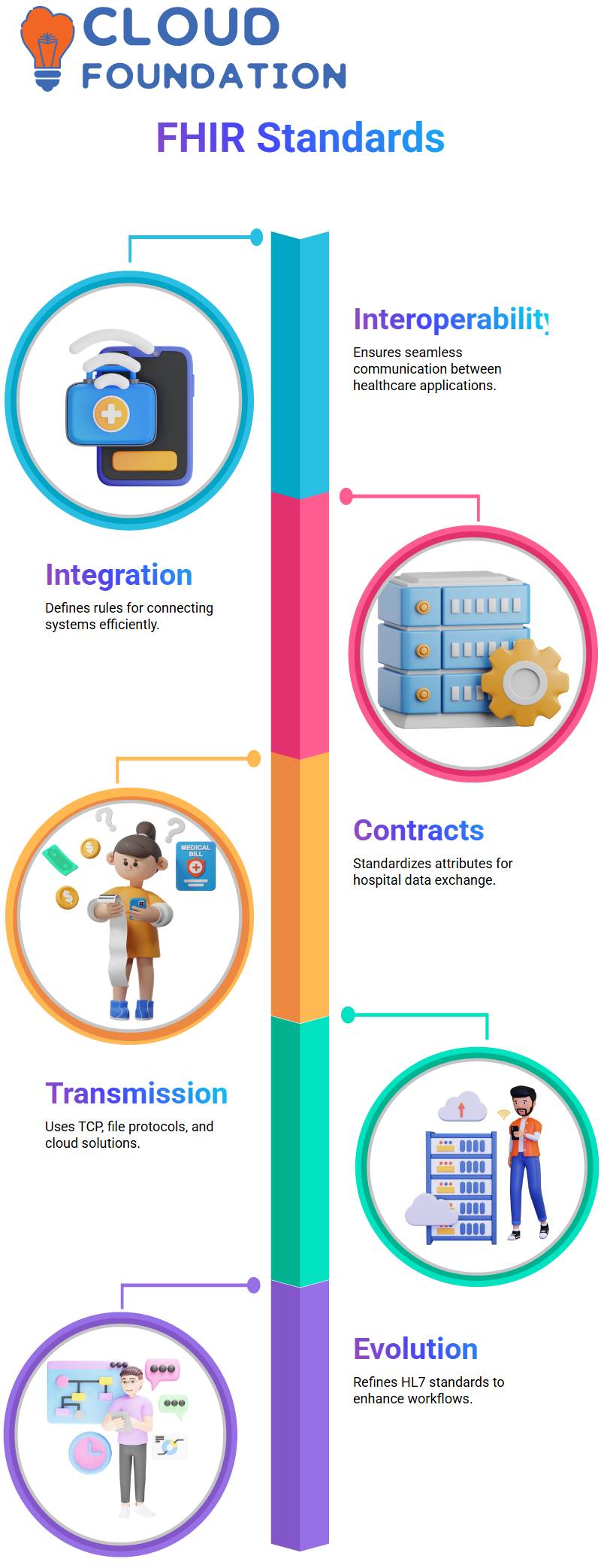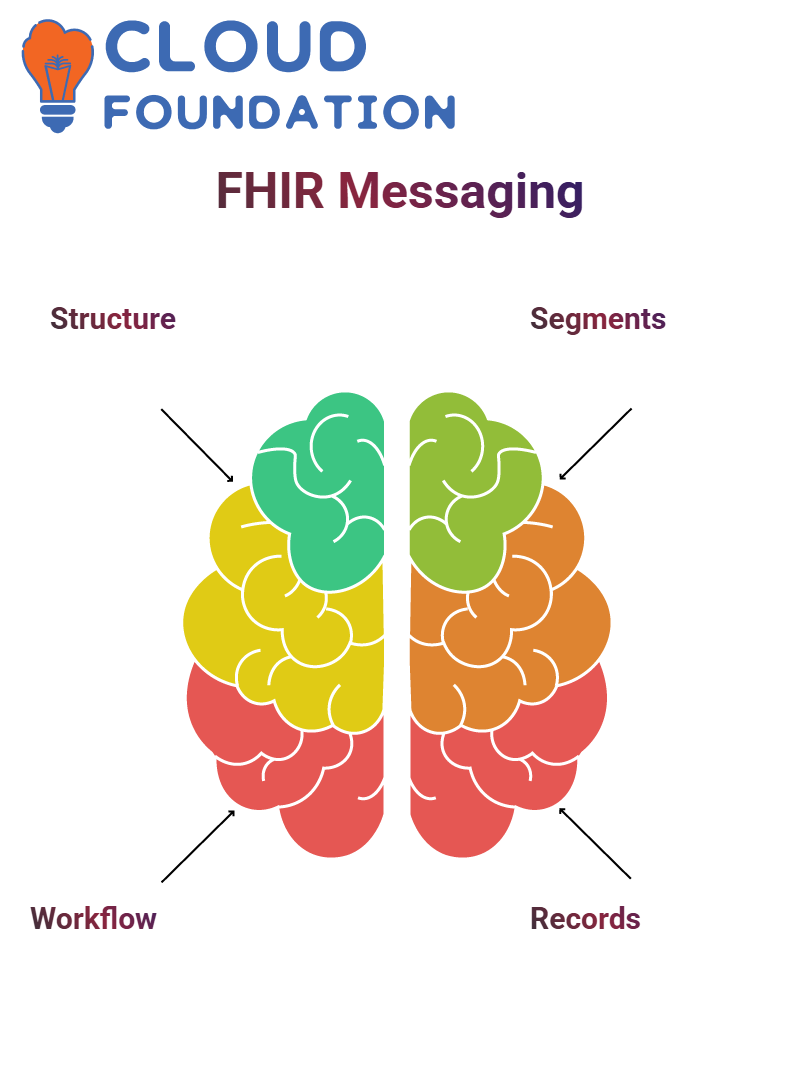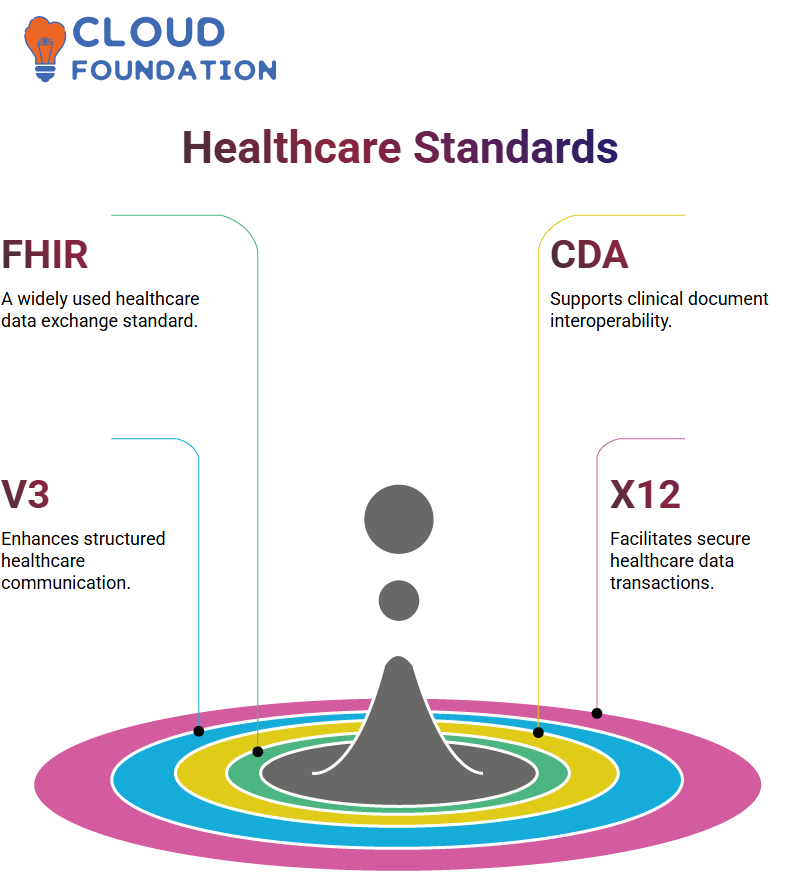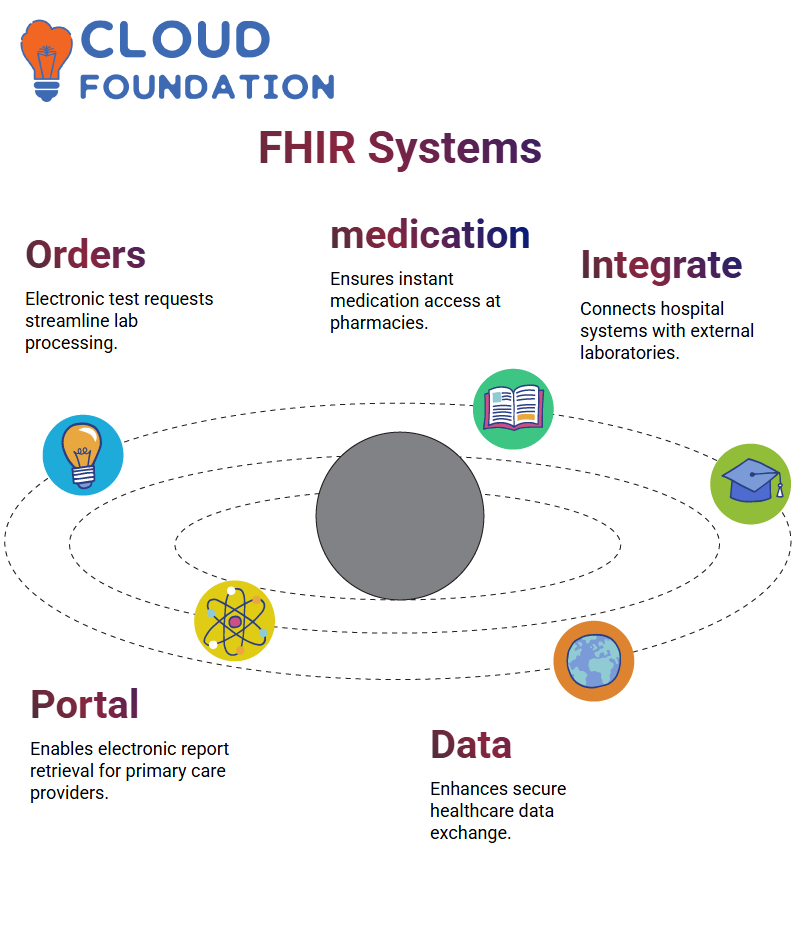HL7 Message Segments Training Tutorial
FHIR HL7:
Today we will explore healthcare technology – specifically FHIR HL7 standards – from their perspective as healthcare applications users.
As someone working within healthcare applications yourself, chances are good you have experienced interoperability problems which FHIR HL7 attempts to resolve.
Imagine two applications–App One and App Two–designed to register patients. Both use JSON but their data attributes vary due to different architectural choices; such inconsistency can pose major hurdles when trying to integrate applications across hospitals.
FHIR HL7 provides healthcare applications with an agreed upon set of rules to adhere to in order to integrate seamlessly.
If Apollo Hospital wishes to connect App One and App Two separately, contracts would need to be drawn up; with FHIR HL7 as their guideline they simply have to include certain attributes for interoperability purposes.
FHIR HL7 serves as an indispensable standard in healthcare technology that makes integrations simpler.
FHIR HL7 lies at the core of healthcare interoperability, enabling systems to communicate seamlessly. Radiology departments can utilize FHIR HL7 data efficiently within their frameworks by setting up frameworks which receive and process it efficiently.
FHIR HL7 requires setting up an environment which meets hospital data exchange contracts. TCP connections, file transfer protocols or popular cloud storage solutions like AWS must all work flawlessly to guarantee seamless data transmission. An integration engineer’s role is critical in making sure data transmission runs as planned.

Evolution of FHIR HL7 Standards
HL7 standards aim to increase interoperability within healthcare workflows. Their organization continues to refine these standards to meet industry demand.
FHIR HL7 exists in multiple versions, such as V2, which operates at the OSI model’s application layer, while its latest iteration, V2.9 is widely adopted across U.S. hospitals.
FHIR HL7 Messaging Structure
Integration engineers need a deep knowledge of FHIR HL7 messages as part of their job duties, since these structured components help with data exchange between healthcare systems.
FHIR HL7 messages contain segments, fields, components and subcomponents in an organized way to provide a logical flow of data and streamline hospital operations from patient registration through order fulfilment.
Hospitals utilize structured messages like these in their workflow processes for patient registration as well as order processing.

Reading and Writing FHIR HL7 Messages
Engineers need a deep knowledge of FHIR HL7 messages in order to use it effectively; each segment features its own identifier for easy interpretation and interpretation is straightforward.
FHIR HL7 segments such as MSH, EVN, PID and PV1 serve as the cornerstone of healthcare data exchange, while strict compliance to specifications enables seamless integration into hospital information systems.
Healthcare professionals frequently encounter FHIR HL7 messages when reviewing patient records or radiology data transfers, providing valuable insights that contribute to decision-making processes. These messages contain vital data which aide in decision making processes.
By correctly structuring FHIR HL7 messages, hospitals ensure efficient data flow. This legacy standard continues to serve as the backbone for health data exchange across diverse medical environments, supporting interoperability between systems.
FHIR HL7 Message Segments
As someone working with FHIR HL7, understanding how to read and format messages properly is of vital importance. Let’s break it down step-by-step.
FHIR HL7’s message header segment MSH plays an essential part in formatting data correctly. MSH1 represents always using pipes (|), while the second field MSH2 represents character encodings. Understanding these basic structures will make handling FHIR HL7 messages smoother.
FHIR HL7 Message Components
FHIR HL7 segmentation occurs through components and subcomponents; this distinction becomes significant when handling complex messages.
Components are separated using carets (), while subcomponents use ampersands. For instance, MSH9.1 and MSH9.2 each hold specific data within their components.
FHIR HL7 Tools for Message Testing
Visualize and test FHIR HL7 messages effectively using various tools; such as the HL7 Test Tool and Soup are widely utilized to do just this.
These tools allow users to effortlessly view message structures, configure ports and send test messages using FHIR HL7 – making life much simpler when used effectively!

FHIR HL7 Encoding and Segmentation
FHIR HL7 segments follow an intuitive structure; any content between two pipes is considered a field, making reading messages effortlessly.
An MSH7 number represents an integer; every pipe divides fields such as MSH1, MSH2, etc. Learning their interactions will make navigating FHIR HL7 much simpler.
Exploring Healthcare Standards Beyond FHIR HL7?
While FHIR HL7 remains an established healthcare standard, other standards like CDA, V3, and X12 exist within the healthcare ecosystem and play an essential part in providing patient care and exchanging data securely. Each plays their unique role to foster excellence.

HL7.org, the organization behind FHIR HL7, works tirelessly to enhance interoperability. Since HL7 V2 became widely adopted within healthcare communication applications, FHIR HL7 has become even more essential.
Comparing Indian and US Healthcare Through FHIR HL7
FHIR HL7 remains an indispensable element of healthcare processes worldwide, regardless of region. While India relies mostly on physical patient records requiring manual documentation, US healthcare systems use electronic health records leveraging FHIR HL7 for patient data management purposes.
Hospital information systems, electronic medical records (EMR), and electronic health records (EHR) all benefit from FHIR HL7’s consistency data exchange protocol for efficient data capturing or prescribing blood tests – its role is integral in streamlining processes.
FHIR HL7 vs. Legacy Standards
FHIR HL7 is an emerging standard compared to HL7 V2, yet it doesn’t completely replace legacy systems in hospitals. While FHIR HL7 offers modern API-based communication, legacy systems still play a large part in existing workflows and data transmission needs.
Transition from HL7 V2 to FHIR HL7 should be gradual, with hospitals gradually adopting it where feasible. Understanding data transformations and triggers within hospital systems is vital in order to ensure its successful adoption of this standard.
FHIR HL7 has become the go-to standard in hospitals due to its flexibility and ease of implementation; however, legacy standards like HL7 V2 remain indispensable to many healthcare facilities – which allows hospitals to gradually upgrade systems while still maintaining interoperability between systems.
Understanding FHIR HL7 in Healthcare
FHIR HL7 plays an invaluable role in healthcare interoperability. By standardizing data exchange and streamlining communications among systems, this protocol ensures smooth operations between different healthcare organizations and systems.
FHIR HL7 provides an important solution in healthcare by helping hospitals and insurance providers exchange data effectively between each other.
At my agency for over a decade, provider domain transactions have primarily been my area of responsibility. So let’s examine how paired and provider domain transactions differ.

Radiology and Imaging in FHIR HL7
Radiology departments use FHIR HL7 to efficiently and reliably manage medical imaging orders and store images efficiently, for instance after patients undergo an x-ray procedure; their image needs to be stored safely with hospital systems as part of an imaging order fulfilment workflow process requiring integration between radiology departments and hospital IT.
PACS allows retrieval when necessary, with interoperability provided by FHIR HL7 to facilitate seamless communications among different entities.
FHIR HL7 in Hospital Information Systems
FHIR HL7 plays an essential part in hospital information systems, facilitating seamless data exchange among modules.
When doctors place orders through CPE (Coded Physician Order Entry), those requests are electronically transmitted directly to laboratories utilizing FHIR HL7 for sending test requests electronically to laboratories for processing.
FHIR HL7 makes life simpler for patients as their details will simply need providing and the system will retrieve their tests without physically carrying the documents around.
Once a specimen has been taken to a lab for processing, FHIR HL7 electronically transmits results back to the hospital for primary care provider review – eliminating paper interactions entirely and saving both time and ensuring accuracy so doctors can prescribe medications in real time based on current information.
Pharmacy modules use FHIR HL7 for electronic prescription transfers; patients simply provide identification to access their medication instantly at the pharmacy.
Through FHIR HL7, all aspects of placing orders to dispensing them efficiently run through one system that ensures communication between healthcare providers and pharmacies.

Integration and Interoperability with FHIR HL7
Hospitals invest in FHIR HL7 integration to facilitate smooth data exchange with external laboratories, making order and results flow seamlessly from hospital systems and third-party labs if this integration exists.
Otherwise, patients might have to carry hard copies of reports. With FHIR HL7 implementation however, even external lab reports can be uploaded directly onto central portals for easy access by patients.
Indian healthcare systems have also adopted FHIR HL7 for data transmission. Reports are uploaded onto portals so primary care providers can retrieve them electronically ensuring continuity of care while decreasing paperwork thereby making healthcare interactions more efficient and reducing paperwork waste.
FHIR HL7 can improve interoperability between hospital systems. From ordering tests, sharing reports or prescribing medication – FHIR HL7 facilitates secure data exchange that keeps pace with evolving healthcare. As healthcare continues evolving, this standard remains essential in improving electronic health record (EHR) management.
FHIR HL7Integration Engineers
Integration engineers play an essential part in helping healthcare data change formats easily, and FHIR HL7 makes this task efficient. Hospitals communicate with radiology and laboratory systems via FHIR HL7 to guarantee reliable data transmission.
FHIR HL7 serves as an intermediary between hospital information systems and various healthcare modules, making their integration seamless.
FHIR HL7 and Insurance Transactions
FHIR HL7 plays an instrumental role in streamlining insurance claims processing. Cashless payments in India rely heavily on agreements between hospitals and insurance providers for cashless payment arrangements.
As soon as my wife was released from hospital care, I presented my insurance card, and they coordinated with our provider to determine her claim amount using FHIR HL7 standards.
EDA X12 standardizes peer domain transactions within the US healthcare environment, with hospitals using FHIR HL7 to submit claims and insurance companies providing approved coverage accordingly.

Navya Chandrika
Author



